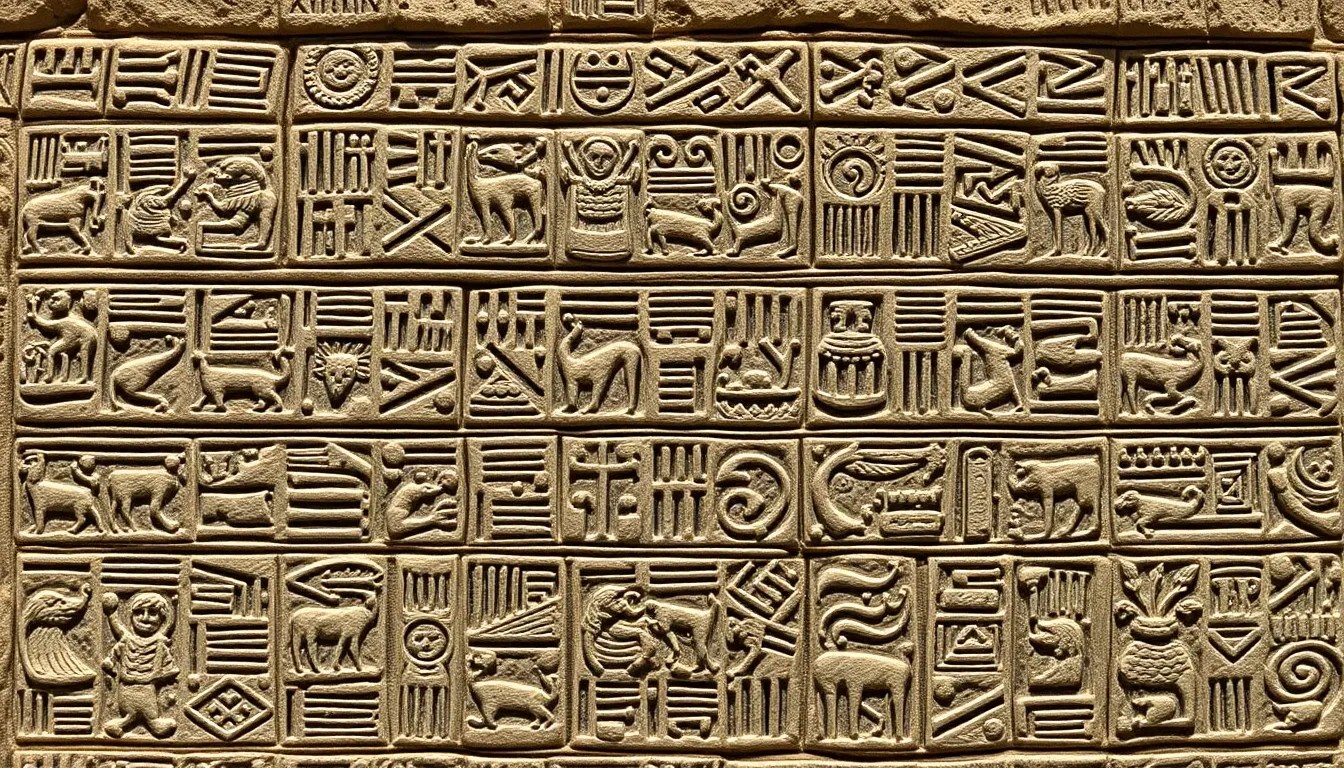The Symbolic Language of Cuneiform: Deciphering Ancient Wisdom
I. Introduction to Cuneiform
Cuneiform is recognized as one of the earliest writing systems in human history, developed by the Sumerians in ancient Mesopotamia around 3200 BCE. Its significance extends beyond mere record-keeping; it served as the foundation for the complex administrative, literary, and religious practices of several civilizations in the region.
This article aims to explore the rich symbolic meanings and the wisdom embedded in cuneiform writing, shedding light on how these ancient symbols offered insight into the lives, beliefs, and knowledge of the peoples who inhabited Mesopotamia.
II. The Origins of Cuneiform
The evolution of cuneiform began with simple pictographs that represented objects or concepts. Over time, this early form of writing transformed into a more complex system of symbols, allowing for the expression of abstract ideas and sounds.
Key civilizations that utilized cuneiform include:
- Sumerians: The pioneers of cuneiform writing.
- Akkadians: Adopted and adapted cuneiform for their language.
- Babylonians: Enhanced literary and legal texts.
- Assyrians: Used cuneiform for administrative and scholarly purposes.
Cuneiform played a crucial role in various contexts:
- Administrative: Keeping records of trade, taxes, and land ownership.
- Literary: Composing epic poetry and myths, such as the “Epic of Gilgamesh.”
- Religious: Recording prayers, hymns, and rituals.
III. The Structure of Cuneiform Signs
Cuneiform signs can be categorized into two main types:
- Logograms: Signs that represent words or morphemes.
- Phonetic signs: Symbols representing sounds or syllables.
The arrangement and combination of these signs are significant, as they can alter meaning and context. Understanding the syllabary—a system of writing that uses symbols to represent syllables—is essential for interpreting cuneiform texts accurately.
IV. The Symbolism Behind Cuneiform Signs
Cuneiform signs are rich with symbolism, often reflecting the everyday life and beliefs of the Mesopotamian peoples. Common symbols and their meanings included:
- Grain: Represented abundance and agriculture.
- Water: Symbolized life and fertility.
- Houses: Denoted family and community.
Additionally, mythological and religious symbols were prevalent, often used in texts that conveyed spiritual beliefs and practices. Case studies of key inscriptions reveal deeper symbolic meanings, providing insight into how these cultures viewed the world and their place within it.
V. Deciphering Cuneiform: Historical Efforts
The deciphering of cuneiform was a monumental task undertaken by early scholars and archaeologists. The effort to translate these ancient symbols began in earnest in the 19th century, with key figures contributing to our understanding:
- Georg Friedrich Grotefend: Pioneered the translation of Persian cuneiform.
- Henry Rawlinson: His work on the Behistun Inscription was critical.
Major breakthroughs in understanding cuneiform were akin to finding the “Rosetta Stone” for this writing system, unlocking centuries of history and knowledge. However, challenges and controversies in interpretation continue to arise, particularly regarding context and language variations.
VI. The Impact of Cuneiform on Literature and Knowledge
Cuneiform texts have made significant contributions to world literature, with the “Epic of Gilgamesh” standing out as one of the earliest works of literary fiction. This epic not only narrates the adventures of its hero but also explores profound themes such as friendship, mortality, and the quest for wisdom.
Moreover, cuneiform served as a vehicle for scientific, mathematical, and astronomical knowledge. The preservation of cultural and historical narratives through cuneiform writing has allowed modern scholars to gain insights into ancient Mesopotamian society, politics, and daily life.
VII. Modern Interpretations and Relevance
Contemporary scholars continue to explore cuneiform, employing innovative approaches to deciphering and interpreting these ancient texts. The relevance of cuneiform extends beyond historical interest; it plays a crucial role in understanding ancient wisdom and philosophy, influencing modern thought.
Furthermore, the study of cuneiform has had a lasting impact on modern linguistics and writing systems, offering insights into how languages evolve and how writing facilitates the transmission of knowledge across generations.
VIII. Conclusion
Cuneiform stands as a significant symbolic language that encapsulates the wisdom of ancient Mesopotamia. Its complex system of signs conveys a wealth of knowledge, preserving the legacy of cultures that shaped human civilization.
As we delve deeper into the meanings of cuneiform texts, we uncover the enduring legacy of Mesopotamian wisdom, encouraging further exploration of ancient writings and their profound implications for understanding our shared human experience.



